The Micro-electromechanical Systems (MEMS) Story - How Important are they?
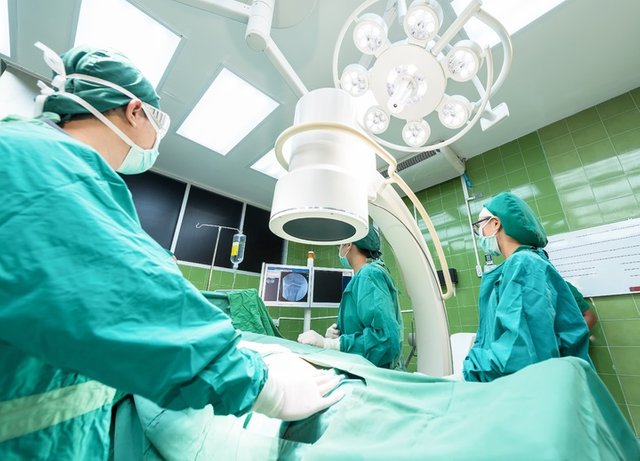
It was on a raining afternoon that I got Paul’s call. I was already rushing home by then after getting a push notification from the pressure sensor app.
I could hear Paul as he muttered that Johnny was losing grip again, almost suffocating!
The last time this happened, I was scolded badly for leaving him by himself at home. But, am I expected to refuse his errands too?
My heart raced as I dashed past the blocks like a thief running for his life as I couldn't risk a mishap.
Paul had already laid his back on the ground to reduce the pressure. I reached out for the car key and it was as if the engine had read the situation for it started immediately.
If not for the yaw-rate sensor in the vehicle stability system giving the tires intelligent traction on the wet highway, the car might have skidded off the road as I drove carelessly through it.
All I had on my mind was to reach the hospital as fast as possible.
I could barely see the road signs through the thick rain as I journeyed on. I owed my navigation to the micro accelerometer controlled and gyroscope-enabled GPS car navigation system which kept me on track throughout our swift trip to the hospital.
The Doctor immediately clipped a small device
onto Johnny’s left arm. This was connected to a digital display that was showing his irregular cardiac waveform.
He plastered an adhesive paper on Johnny's arm and inserted a tube through which a sterile microneedle was used to administer a dosage of some drugs.
Seconds after, the waveform from the digital display showed Johnny was recovering. I was looking as those tiny devices stabilized Johnny's condition.
The doctor said that from now on, Johnny would have an ingestible microchip that would read his blood pressure and heart rate. These would be monitored on his mobile phone through some sensors attached to the chip.
At least, we can now monitor any impending crisis and Mum will scold me less for not being a superman - present everywhere all at once!
Moments after Johnny opened his eyes, he had quickly reached out for his smartpen. In it are some microsensors that utilize an accelerometer which reads the pattern made when he moves his hands converting the motion into text.
That was him not giving up on his “always documenting” attitude despite his current situation. This micro technology enabled pen has been a helpful tool in his record keeping mission as he need not stress himself to write, moving his hands in the pattern of the desired character will do!
I switched on the projection screen TV in front of us and we both smiled sheepishly to the funny scenes displayed on it.
Moments later, I watched him as he slowly drifted back to sleep.
Yes, Johnny stayed alive all thanks to some quickly administered technologically aided medications.
But, is that why we are here? Isn't this suppose to be a science or engineering related post?
Well, let me make the story more relatable as regards what we would be discussing today.
If we look deeply at each line of the short fictional story above, we would notice how technology can touch our lives tremendously.
Right from the first paragraph, I mentioned how a "Pressure Sensor App" alerted me about the situation at home.
This app is connected to a sensor attached to Johnny's body. It pushes notification on a connected smartphone if a risky change in blood pressure is recorded.
Next is the Automobile sensors that kept me safe and guided through the journey. The Vehicle dynamic control system and the GPS system all are technology aided.
Another worthy of mention is the medical assistants - the heart rate response display screen and the ingestible microchip used for monitoring the body health condition.
Do we know that all these are made possible by the discovery of the Micro-electromechanical Systems (MEMS) Production technology?
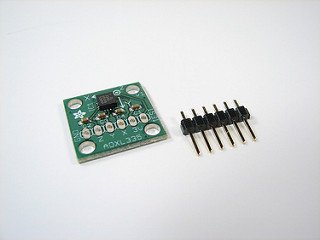
Accelerometer. [Source: Flickr] - CC-BY 2.0
The MEMS technology involves the creation and embedding of microscale units in devices. These units integrate both parts that are electrical and as well mechanical on tiny semiconductor substrates (plates).
They sense and actuates just like the bigger counterparts without compromising any functionality.
Each time, we hear that the world is going smart every day. We keep seeing increased robot interventions in our daily activities while the industry of wearable devices never stopped growing too.
Also, our phones are getting smaller and smarter each day with more and more mouthwatering features being added to it.
Have we wondered how all these are made possible? How those tiny panels are able to perform these tasks without any problems?
Well, we have to say a big thanks to the discovery of microfabrication and more specifically to the promising improvements in the Micro-electromechanical systems fabrication technology which makes production of these tiny units possible.
This technique utilizes the Integrated Circuit (IC) Batch Production techniques used in electronics to manufacture these tiny, movable and non-movable parts that afford us all the aforementioned technological privileges.
This awesome field which is quite multidisciplinary requires lots of expertise.
To make a micro-element, computer-aided designs are usually made coupled with many engineering materials properties consideration along with the specialized manufacturing processes through which shaping and molding of these parts are possible.
So, you’ll agree with me that there’s a lot in stock in this brilliant manufacturing field.
Another interesting thing is that it cut across many industries as the trend of moving from bigger machine to smaller, higher performing counterparts is desired by all.
However, Microfabrication isn't new and in fact, it has been the backbone of electronics manufacturing where the electrical properties of the silicon boards enable the mounting of components like resistors, capacitors, and others are mounted on them.
In the manufacturing of micro-electromechanical systems, both the electrical and mechanical properties of the silicon substrate are considered.
This enables us to mount on them mechanical and electrical units that aren't just a miniature of the macro counterparts but equally units that are able to sense, control and actuate just as much as the bigger ones will.
In simpler words, micro fabrication has been implemented for producing micro scale version of some devices in the past. Most of this though either comprises of parts that are rigid or purely electrical as seen in chips embedded in electronic devices.
But with the introduction of MEMS production techniques, micro scale components that combine parts that are both rigid and dynamic is becoming achievable.
Gears, levers, and other movable machine parts are now printed on thin silicon boards coupled with other rigid parts and embedded in our devices to give us a perfectly working miniature of the bigger boys.
The Micro-electromechanical units are what make up the intelligent sensors of the automobile control systems, the heart rate display screen, the implanted sensors and the smart pen mentioned above.
They are micro-electromechanical systems that could sense, measure, control and actuate.
How Did We Arrive Here and How Well Are We Doing?
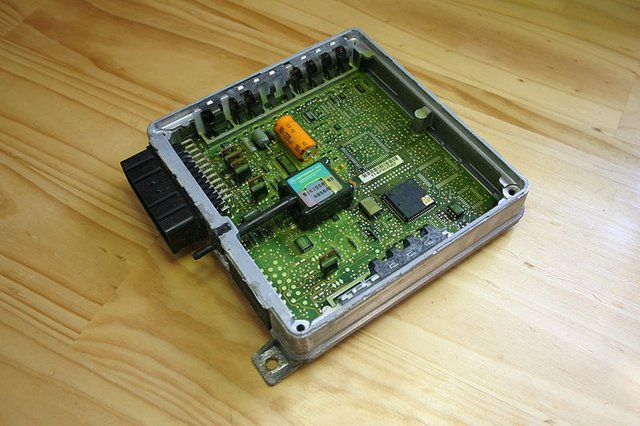
MEMS Board. [Source: Wikimedia Common] - CC BY SA 3.0 Unported License
This was viewed as a property that could lead to the replacement of the bulky electromechanical sensors with minimized versions.
This drew much attention and in the 1960's many papers describing the first silicon micro diaphragm pressure sensor and strain gauges were published. In the late 1960's, US companies adopted the idea and the first silicon pressure sensors were commercialized.
In the early 1970's, improvements in micromachining were witnessed and the first proper MEMS sensors were made and they showed arguably superior performance as compared to the existing bulky ones.
Since then, low-cost, small and high performing pressure sensors have been progressively invented and nowadays, MEMS-based devices ranging from those with no moving parts to the complex ones with various moving parts have been surfacing.
It has even been projected that the MEMS market is expected to reach about one trillion units per year within the next decades ahead and this is obviously happening already with different technological innovations being unraveled daily.
The information and communications industry has been able to integrate low power circuits, wireless communication modules and other complex micro parameters enabling the design of solutions of wide range applications.
The healthcare industry has also been witnessing developments of intelligent biosensors for monitoring physical well-being as well as performing specific disease diagnosis.
Also, monitoring of operational parameters of vehicles is another catchy innovation that the MEMS technology has brought.
Accelerometers now help improve the Air Bag initialization speed limit, the braking and fuel level indicators are now sensor monitored all thanks to embedded micro-electromechanical units.
Let's take a look at some established Applications of MEMS in our daily lives
- The Automobile Industry
The Automobile industry is one of the greatest beneficiaries of this awesome technology as many improvements we see today in this field owes its success to micro-electromechanical units that are embedded in their systems.
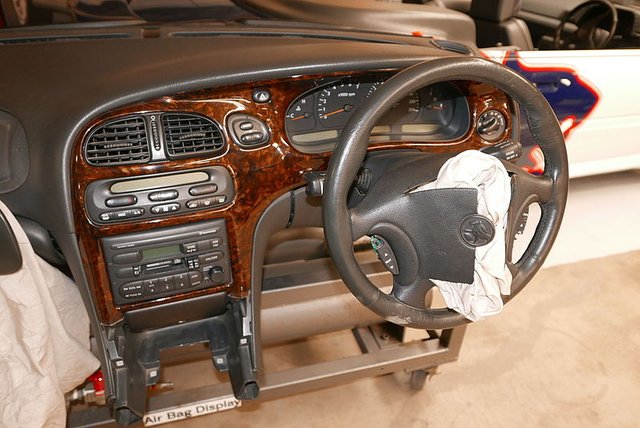
Air Bag. [Source: Wikimedia Common] - Public Domain License
Here, an accelerometer continuously measures the acceleration of the car over a predefined threshold. Whenever a deviation from this limit is noticed, a microcontroller compute the value to determine if it is a large net change.
If it is, the Airbag is fired within microseconds protecting the driver from hitting his head on the steering wheel or flying out of the car.
Some years back, the airbag was operated on g switches which are an inertial switch made of springs housed in a cylindrical enclosure.
These switches are distributed around the vehicle and only activate the airbag after about a handful of the switches has been able to detect a high rise in acceleration.
These are not just ineffective in most cases, they are also quite expensive considering the numbers that need to be planted around each part of the vehicle.
But with the introduction of MEMS accelerometers, the control is automated by the continuously recorded measurement of changes in acceleration.
The microsensor also has self-testing properties that make it determine if the acceleration changes is really a risky one before firing the air bag.
The Vehicle Dynamic Control (VDC) is another prominent intervention of MEMS in the Automobile industry. This system allows the driver to gain instant control whenever the tire starts to skid.
The VDC is made of a gyroscope, a low g-accelerometer and a wheel speed sensor which all work simultaneously to measure the turning rate of each wheel.
The g-accelerometer determines if the car is sliding by comparing the wheel turning rate to a specified threshold and initiate a single-wheel braking or torque reduction in that tire, thereby restoring it to the normal operating condition.
Interestingly, all these operations are completed within microseconds of detection so much that the driver may not even notice the VDC in action.
Some other notable impact of MEMS in the Automobile includes the Anti-theft Systems in vehicles, the Electronic Parking Brake System, the Vehicle Navigation Systems, the Headlight Leveling System and many more.
- Medicine
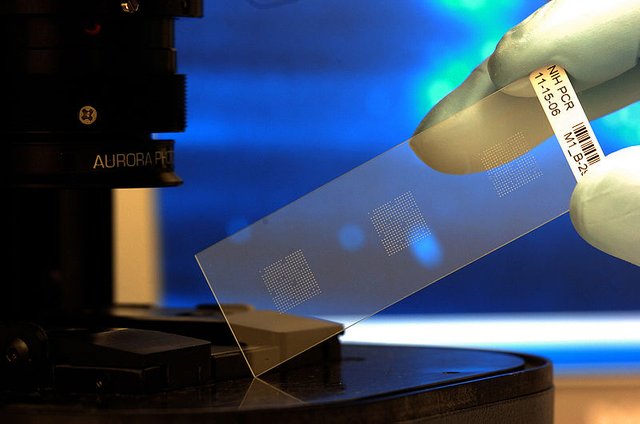
Bio Chip [Source: Wikimedia Common] - CC BY SA 2.0 License
In cardiovascular medical procedures, a sensorized ventricular assist device developed to improve the quality of treatment and aiding the medical specialist is one catchy innovation in this industry.
This project, which is part of the EU SensorART project comprises of different implantable and wearable devices that could help improve a surgical procedure.
There's the wearable and implantable pressure sensor that can be used for monitoring the arterial blood pressure utilizing a 3D accelerometer for detecting the posture and other movements of the patient.
Other cool developments are in the medical ultrasound imaging field where the Capacitive micro-machined ultrasonic transducers (CMUTs) are used for medical imaging applications.
The use of MEMS accelerometers in capsule endoscopes for disease diagnosis is another awesome Biomedical application of this technology.
- Sports and Leisure
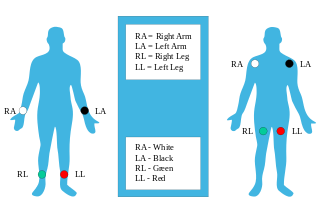
Electrocardiography. [Source: Wikimedia Common] - Public Domain License
We can see this used by popular games like FIFA and PES where players are required to wear some 3D Inertial Measurement Unit (IMU) Sensors so as to simulate their reactions and performance into the gaming consoles.
Even in live matches, we have seen players wearing same sensors used to measure some certain parameters while they play on. Injuries can also be monitored through this technology.
Another interesting one is the SenseWear Armband which is a research work by Zanetti et al. where rugby players put on the armbands.
It is used to measure their energy expenditure during the game which could be used to improve their training techniques for improved performances.
Many other interesting applications are those used during exercises to monitor the body's response to different activities.
We have the IMU sensor that is used for estimating squat exercise dynamics, the MEMS capacitive sensors used for estimating Climbing dynamics and the Affinity-based biosensors that are used for doping control analyses.
Other interesting applications of MEMS are found in the Military field, in Safety and Environment Sensing systems, in Space Exploration field and many more.
To Wrap it Up
Micro-electromechanical systems are becoming indispensable as electronics in our day to day life. The miniature sizes, the reduced cost, and abundance for implementation enabled by the Integrated Circuit (IC) Batch Production mode of making them makes them a very promising technique of technological revolution
Our Smart cities, Robots and other new technological innovations will only survive if the MEMS technique continues to exist because all the microelements and sensors that make the functionality of this technology possible are dependent on micro-electromechanical units.
In this section, I was able to make us realize how big and multidisciplinary this field of manufacturing is and the potential innovations we can uncover with its continuous growth.
I will be introducing us to more processes involved in making MEMS units, the issues with micro-scaling and more related subtopics will be treated in my subsequent posts on this topic
Thanks for reading this to the end. You're appreciated!
References
- Mohamed Gad-el-Hak - "MEMS - Introduction, and Fundamentals"
- Adisorn Tuantranont and Victor M. Bright - "Introduction to Micro-Electro-Mechanical Systems (MEMS)
with Emphasis on Optical Applications" - Nadim M. and Kirt W. - "An Introduction to MEMS Engineering", 2nd Edition
- "An Introduction to MEMS" - Prime Faraday Technology Watch.
- Gastone Ciuti, Leonardo Ricotti, Arianna Menciassi, and Paolo Dario - "MEMS Sensor Technologies for Human Centred Applications in Healthcare, Physical Activities, Safety and Environmental Sensing: A Review on Research Activities in Italy"
- Jack W Judy - "Microelectromechanical systems (MEMS): Fabrication, design, and applications"
- Robert Neal and Antonio Luque - "Applications of Microelectromechanical Systems in Industrial Processes and Services"
- Harvey Weinberg - "MEMS Sensors Are Driving the Automotive Industry"
- EEHerald - "Introduction and application areas for MEMS"
If you write STEM (Science, Technology, Engineering, and Mathematics) related posts, consider joining #steemSTEM on steemit chat or discord here. If you are from Nigeria, you may want to include the #stemng tag in your post. You can visit this blog by @stemng for more details.

I'm a proud member of @promo-mentors where you get mentored and guided on how to make quality posts on steemit amongst other benefits. Do join us on discord
. We anticipate your arrival.


Fascinating.
Thanks sire. It's nice seeing you around.... I'm honored...
Hello! I find your post valuable for the wafrica community! Thanks for the great post! @wafrica is now following you! ALWAYs follow @wafrica and use the wafrica tag!
Oh, this is such an interesting post. I love the story part on Johnny an Paul, it really gave an idea of what we're dealing with in this article. I believe the MEMS are microchips and those watching the Arrow series should have an idea on what Mr Breezie is talking about. Thanks for the education.
Thanks so much for the feedback. Nice adding the Arrow series part. I bet I don't know about it😂😂
Rareghost tho, funny name. Thanks for coming around..
This is a fantastic post. Nice story, nice grammatical command and really amazing delivery. I have learned a lot about MEMS. Thanks for the information. Well done!!
Thanks for the kind words mate, I'm glad you could learn something here....
Thanks for stopping by
Sports injury can be avoided these days as MEMS are used to track player's fitness levels and when they are close to the red zone they are advised to rest.
Yes. That's another awesome impact of MEMS... it has been a fantastic introduction
Thanks for stopping by.
You welcome bro
Generally, the good effect of technology can never be overrated. Well, talking about the MEMS, we can call it a lifesaver.
All thanks to you for showing us how helpful they are with your informative and educative post.
Glad you find it interesting... Thanks for coming around and definitely, technology wouldn't stop wowing us
You're welcome sir! 👍
pls do you have any idea if MEMS are in use, in nigerian sports federation?
I doubt its application in Nigerian sports- i meant on players.. At least, I haven't noticed so.
Thanks for stopping by mate.
MEMs are much promising to technological revolution. The application of MEMs fits in every aspect of life development. You've written this in an awesome way. Good job @mrbreeziewrites
I'm flattered!
Thanks for the kind words.
Yes, we are in for something big with MEMS..
Thanks for stopping by
The question of how small electronic and mechanical elements are manufactured has always bothered me. I finally have an answer to my question.
Micro electromechanical systems definitely play a large part in our lives. Your article was very informative.
This is nice hear. I'm glad I was able to make you learn something new... Thanks for the comments
If the technology of this century amazes me this way, I feel happily sorry for the next century generation. 😉
Greatly written man!
Smiles.. You can say that again....
Thanks for stopping by